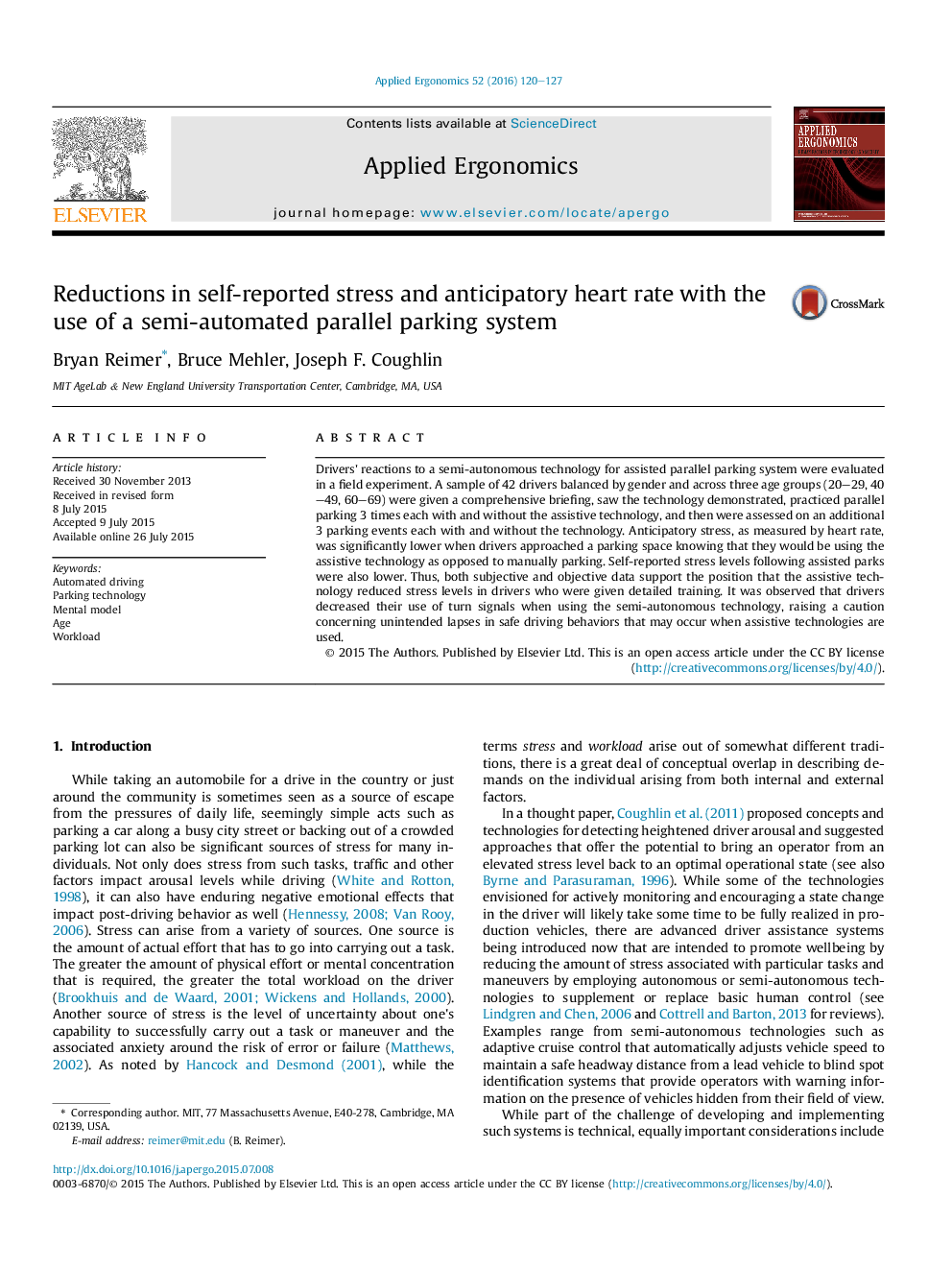| Article ID | Journal | Published Year | Pages | File Type |
|---|---|---|---|---|
| 6947925 | Applied Ergonomics | 2016 | 8 Pages |
Abstract
Drivers' reactions to a semi-autonomous technology for assisted parallel parking system were evaluated in a field experiment. A sample of 42 drivers balanced by gender and across three age groups (20-29, 40-49, 60-69) were given a comprehensive briefing, saw the technology demonstrated, practiced parallel parking 3 times each with and without the assistive technology, and then were assessed on an additional 3 parking events each with and without the technology. Anticipatory stress, as measured by heart rate, was significantly lower when drivers approached a parking space knowing that they would be using the assistive technology as opposed to manually parking. Self-reported stress levels following assisted parks were also lower. Thus, both subjective and objective data support the position that the assistive technology reduced stress levels in drivers who were given detailed training. It was observed that drivers decreased their use of turn signals when using the semi-autonomous technology, raising a caution concerning unintended lapses in safe driving behaviors that may occur when assistive technologies are used.
Related Topics
Physical Sciences and Engineering
Computer Science
Human-Computer Interaction
Authors
Bryan Reimer, Bruce Mehler, Joseph F. Coughlin,
